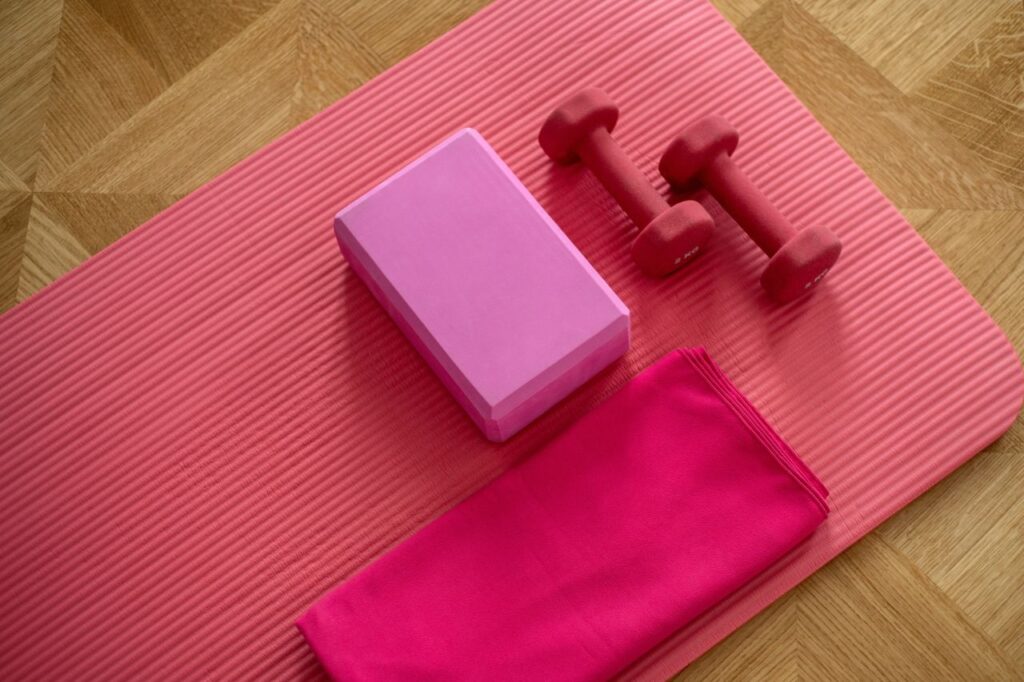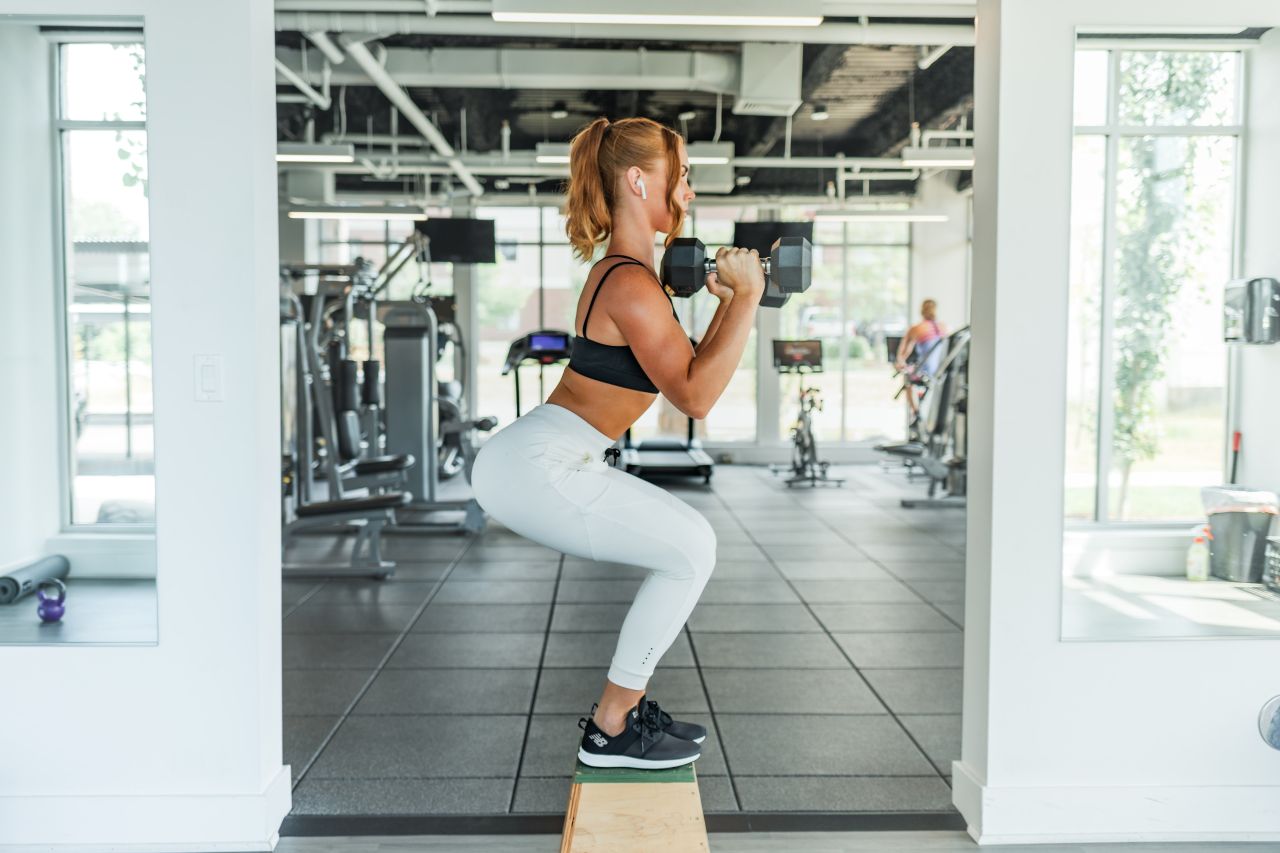You may have to make do with the light weights you have at home if you need access to any gyms right now. Refrain from being deceived into thinking that because light dumbbells aren't as heavy as the other options available at the gym, you won't get as good of a workout from using them.
Check out this page for additional exercises using light dumbbells.
Light Weight VS. Heavy Weight
There are two distinct approaches to strength training, which you can summarise as lifting lesser weights for a greater number of repetitions or lifting heavier weights for a smaller number of repetitions. Training with lighter weights more frequently and for longer periods increases muscular endurance, whereas lifting heavier weights increases strength.
When shedding pounds, there are a few different schools of thought regarding whether combining smaller weights and more repetitions is superior versus using heavier weights and fewer repetitions. For effective weight loss, the American Council on Exercise (ACE) recommends lifting heavy weights and progressively increasing the amount of weight you're lifting as your strength improves. Your power and muscular mass will rise due to the weight gain, which will also assist speed up your metabolism, allowing you to consume more calories and shed more pounds.
In the meantime, a small study involving 49 male subjects was conducted and published in July 2016 in the Journal of Applied Physiology. In this study, one group of subjects lifted heavy weights for a low number of repetitions, while the other group lifted light weights for a high number of repetitions. After the conclusion of the research project, the scientists observed that the muscle mass and muscle fibre size improvements for both groups were very similar.
The Benefits Of Light Weights
Strength training that emphasizes endurance is best accomplished with fewer weights. Because they have an aerobic and cardiovascular component, exercises with lighter weights are beneficial for building leaner muscle. A potential benefit for beginners still getting their bearings is offering lighter weights.
Beginning your trip, lifting weights with smaller weights helps you focus on form, allowing you to make sure it is mastered before moving on to more tough and heavy weights, which require good form to prevent accidents.
Other advantages include the following:
- It is simpler to locate the necessary exercise apparatus.
- Improve technique and form.
- Develop a svelte muscle mass.
- Develop your muscular strength.
- Increase the amplitude and breadth of your motion.
- Develop your stamina and endurance.
When To Use Light Weights
In general, using lighter weights will require you to complete a greater number of repetitions and sets. When using a weight that is not as difficult, the amount of time spent under strain required to fatigue the muscles increases.
If you want to improve your physical endurance, lifting fewer weights will help you get there. This rep plan is a useful addition to exercises that focus on endurance, such as running a marathon. On days in between sessions of heavy lifting, light weights may be effective. Light weights may also be appropriate for targeting minor postural muscles, such as the rotator cuff muscles of the hip and shoulder.
How To Use Light Weights
You should perform many repetitions of each exercise when working out with light weights. That involves doing at least 12 repetitions to improve your muscle endurance. In addition, to increase muscle size (hypertrophy), perform 8-10 repetitions of each exercise. However, remember that these are merely guidelines and that even novices can achieve outstanding results by doing 12 to 15 repetitions of every given exercise.
The weight you chose should still be difficult enough to push you to the point that, by the time you reach the end of your set, you are almost at the point of failure, which means you cannot complete another repeat. When you have reached the point where you can complete the exercise with the same weight for the maximum number of repetitions, you should move up to a heavier weight. This method is known as progression, and to keep experiencing results. It would be best if you put it into practice.
Limits In Light Weight Training
One more disadvantage can be associated with using light weights. Even if you practice lifting light weights to failure, the results of tests on a small number of men demonstrated that low-load lifting did not activate all motor units in the muscle being targeted. In contrast, when there is a large load, all motor units are engaged. So lifting modest weights won't have as much of an effect on your muscle mass because your muscles won't be fully activated.
However, another study found the opposite to be true. These researchers experimented with 18 male subjects and discovered that low-load and high-load training have comparable effects on increasing muscle mass.
Examining these facts in greater detail might shed light on this seeming contradiction. For example, training with a low load tended to increase the number of type I muscle fibres, while training with a high load tended to increase the number of type II muscle fibres. Therefore, endurance athletes, like runners, would benefit the most from lifting lighter weights.
The researchers exclusively evaluated male participants in these investigations, including fewer than 20 people. Because of this, scientists will only be able to draw definitive conclusions regarding the motor units and fibre types that are altered by lifting low weights once they conduct additional research.
Combining Light And Heavy Weights
Working out with lighter weights has several benefits as well as drawbacks. Researchers believe that inactive people who want to enhance their health and trained athletes who need success in every scenario would benefit from a diverse approach to resistance training.
You can improve isometric strength by exercising with a low load, while maximal strength can be improved by training with a high load. However, to succeed in daily life, you will ultimately require both forms of strength. The author contends that strength training activities such as bicep curls do not build the type of strength necessary daily, known as functional strength. Instead, the kind of strength that you have will enable you to move heavy as well as light objects from any posture.
Resistance exercises with varying intensities can help you improve your functional strength. In this form of exercise, resistance is provided by the use of elastic bands or metal chains. In a study that lasted six weeks, sixteen of the most talented young athletes discovered that varied resistance training boosted their overall muscle strength. In addition to that, it boosted their overall muscular power.
In this very small-scale study, it was interesting to note that variable resistance training performed better than typical resistance workouts. However, researchers must conduct additional trials to provide an accurate comparison between the two training methods. However, you cannot argue one fact: classic resistance exercises and variable resistance training have many benefits, especially when performing the exercises with light loads.
Light Dumbbell Workouts
You will stimulate your muscle fibres during this workout with dumbbells. Then they will experience some time under stress, which will feel slightly uncomfortable, thanks to the use of isometric holds. However, it is a combination that may produce quick and noticeable results even with relatively modest weights.
Renegade Row
Begin by getting into the press-up position while holding the dumbbells. Carry out press-ups and, at the height of the movement, row one dumbbell upwards, bringing it in towards your armpit. Make an effort to maintain a parallel position to the floor. If your abs start to pain, you know the exercise is effective.
Bent-Over Row
Lean forward at the hips and grasp a dumbbell in each hand while you perform this exercise. Next, pull the dumbbells up towards your sternum, and when you reach the top of the movement, pause there while contracting your shoulder blades.
Maintain your hold at the very peak of the motion.
Dumbbell Upright Row
Maintain a strong posture while holding a dumbbell in each hand. Raise your forearms toward your chin while leading with your elbows and extending your forearms to the sides. Maintain control of the movement so that you do not place excessive strain on your rotator cuffs; descend the dumbbells in a controlled manner.
Biceps Curl
Maintain a tall stance while holding a dumbbell in each hand and pulling your shoulders back. Curling the weights toward your chest while keeping your elbows tucked into your sides will allow you to stop the movement just before your forearms reach the vertical position. Reduce while maintaining control.
Dumbbell Reverse Fly
Keep your hands facing in toward each other while holding a dumbbell in each hand. Then, lean forward at the hips and lift the dumbbells outward until they are at chest height while maintaining a bend in the arms. Then, bring them under control by lowering them.
What Are The Benefits Of Lifting Light Dumbbells?
Enhanced Strength
When you go to the gym again, choose a lower weight for the dumbbell and increase the number of times you repeat the exercise. The amount of work you put in matters, not the weight of the dumbbells you use. If you use lighter weights, you'll be able to keep going for longer before experiencing muscle fatigue.
Better Range Of Motion
In many cases, the greater the weight, the reduced the range of motion and the fewer benefits you will experience. However, you will be able to complete the whole range of motion for a particular exercise if you use a lighter dumbbell, which is one of the benefits of utilizing a lighter weight.
The ability to move across a wider range of motion correlates to enhanced flexibility and better muscular strength. In addition, your targeted muscle can take the load without the assistance of any compensatory muscles if you use a lighter dumbbell. Therefore, it will ensure you get the most out of your workout for that particular muscle group.
Reduced Chance Of Injury
Your body won't be pushed to lift more weight than it can support if you work out with fewer dumbbells, which means you won't increase your risk of injury. The days of performing exercises such as dumping weights on your toes or overextending yourself are long gone. You will be better able to concentrate on your form and technique if you use a lighter dumbbell, which will help you avoid injury and maximise the effectiveness of your time spent in the gym.
Everyday Life Is Made Easier
Your muscular endurance can be increased by performing many repetitions of lighter-weight exercises using dumbbells. Are you interested in finding out exactly how this will assist you? To begin, it may make day-to-day activities less difficult.
According to a definition provided by Shape magazine, muscular endurance is the capacity of the body to continue working out for an extended amount of time. It indicates that the more endurance you have, the less exhausted you will be (and the longer you will last), regardless of whether you are performing tasks such as cutting the grass, participating in the enjoyment of a sports league, or playing with your children.
You can also improve your muscular endurance by concentrating on strength exercises that are performed in a repeated fashion.
No Need To Rely On Momentum
If you are trying to lift a dumbbell that is too heavy for you, you are probably using momentum in addition to the strength of your muscles. Although doing so might make you feel more powerful, it won't help you get stronger. When you exercise with dumbbells of a lower weight, your muscles make most of the effort rather than momentum.
Improve Your Form
Lifting large weights won't help you improve your form nearly as much as doing exercises with lighter dumbbells. When you're intent on putting as much weight as you possibly can on the bar in the gym.
FAQs About Dumbbells
How Do You Know When You Should Lift Heavier?
It is recommended that you begin lifting greater weights gradually and at a comfortable rate.
You've been hitting the gym for a while, and the 5-pound weights no longer seem to be affecting you. So what is it that you ought to do? Naturally, you should go for larger weights, but you should also be sure to go at your own pace.
It would be best if you aimed to push yourself to your limits consistently and build your way up gradually over time. No matter what rep range you're using for your working sets, the last rep to two should be a significant struggle and test your strength to the fullest extent. If this is not the case, you will know you need to increase the resistance.
Putting away the findings of scientific studies and the recommendations of personal trainers, maintaining a regular schedule is essential to your health and exercise regimen. And the likelihood is that this is the workout that provides you with the most enjoyment and engagement, regardless of the types of weights that you use.
Are Lightweight Dumbbells Good?
There is no one optimal tactic; any option is perfectly acceptable. Strength training with a heavy barbell, dumbbell, and kettlebell lifts is sure to produce the desired results. However, lifting smaller weights can also help you become stronger. It will take you a little longer. It can all be boiled down to a single significant factor: the exhaustion of the muscles.
What Are The Benefits Of Working Out With Heavier Weights?
Lifting big weights is an excellent choice if you want to gain muscle and improve your strength in the most time and effort-effective manner possible. In addition, lifting big weights will allow you to reach muscular fatigue more quickly, which is a necessary step in gaining strength.
Curling a weight that weighs 5 pounds takes far more time and effort than curling a dumbbell that weighs 25 pounds. Therefore, you can find the best return on investment by doing heavy compound exercises. Because of this, you can apply the most feasible load and engage more muscles in a shorter amount of time, which makes the exercises more effective and helps with weight reduction.
In addition, if you want to incorporate more cardiovascular activity into your regimen, you can accomplish this by lifting heavier weights in a planned manner throughout your strength training routines. You can also execute the exercises in succession, like a circuit, to receive the added benefit of working out your conditioning all at once.
Can I Build Muscle With Light Weights?
You can lift light weights correctly for fifteen to twenty repetitions. By the twentieth rep, you should feel a significant constriction in the muscle you are working on, and you should be very near to reaching muscular failure. Let's say you have the capacity to do one or two more. That's the kind of information we're looking for.
By lifting with lesser weights, we can prevent other muscle groups from joining in to aid with the lift, further isolating the muscle group we're trying to focus on.
It will make it possible for you to increase the volume of your workout by allowing you to perform more repetitions (15–20) and more sets (4-5).
You can also slow down the tempo by lifting and lowering the weight more slowly and focusing on connecting with the muscle group doing the activity.
How many reps and sets using light dumbbells?
Light dumbbell reps and sets depend on your fitness objectives and level. Use smaller weights and 12-15 reps for muscle endurance and toning. Lower reps (6–8) with heavier weights build muscle. Start with 2-3 sets per exercise and build up.
Home exercises with light dumbbells?
Light dumbbells are great for home training. They're small, lightweight, and space-efficient. Home workouts with light dumbbells can target multiple muscle areas. They make home exercises easy and affordable.
Rehabilitation with light dumbbells?
Absolutely! Rehabilitation centres employ light dumbbells to improve muscles after surgery or injury. Light dumbbell exercises with a doctor or physical therapist can develop muscle strength, improve joint stability, and increase mobility.
Are light dumbbells effective?
Light dumbbells can yield results when used consistently and with a balanced training plan. Light dumbbells are good for toning, sculpting, and boosting muscular endurance. Progressive loading can modify muscular tone and fitness.
What muscles can light dumbbells target?
Light dumbbells target multiple muscular areas. Light dumbbells can work the biceps, triceps, shoulders, chest, back, core muscles, glutes, quadriceps, and hamstrings. Light dumbbells may work the whole body with the right exercises.


